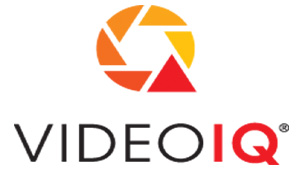
REDEFINING IP VIDEO SURVEILLANCE
In August 2008, VideoIQ delivered on its product objective by introducing the VideoIQ iCVR -- the world¡¯s first intelligent surveillance camera with video recording. Building advanced video analytics, content aware storage and intelligent networking into high-quality security cameras and encoders is redefining IP video surveillance. The VideoIQ iCVR solves the bandwidth and storage problems with traditional network cameras, while turning video into a proactive security solution. It sets a new benchmark for scalability, fault tolerance, ease of use and total cost of ownership, while doubling the intelligence in video surveillance systems.
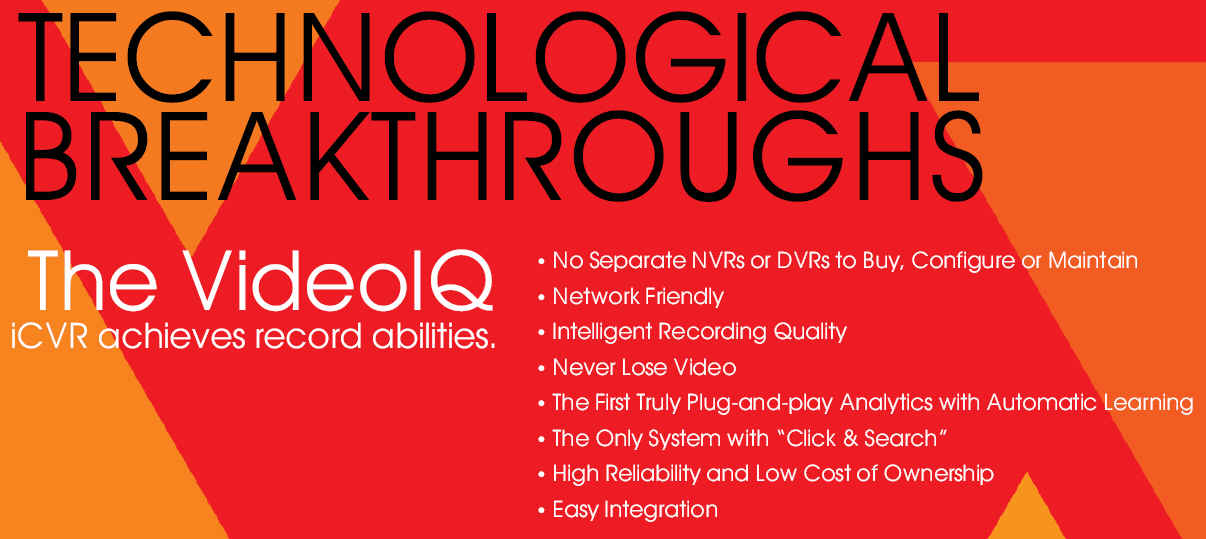
BROAD-RANGE OF APPLICATIONS
The VideoIQ iCVR has been installed with beta customers for the past 6 months, during which time the company has accepted hundreds of pre-orders for the product. With the VideoIQ iCVR, beta customers have transformed their passive video recording practices into dynamic, analytics-driven systems for early warning, security protection and incident investigation. VideoIQ systems have been installed in applications ranging from the protection of homes and commercial businesses to high-risk homeland security facilities. Following are examples of applications in use today by customers:
Perimeter Protection
Auto dealerships, long-term parking lots, transport sites and other facilities are benefitting from the ability to detect various forms of perimeter breaches. By monitoring the perimeter of the location, such as for persons coming over a fence or vehicles attempting to enter through unmanned exit gates, VideoIQ alerts local or remote guards when access to the secured area is not gained via authorized entry points.
Virtual Fence or ¡°Tripwire¡±
Often times there may not be a physically defined barrier, such as a fence or wall, but there is a virtual ¡°Line in the sand¡± which should not be crossed. Virtual fences can be created using VideoIQ in these situations. Examples of virtual fence line usage include monitoring a swimming pool for persons falling in after hours, monitoring the shoreline of a lake, beach, or stream for unauthorized access, and detecting persons or vehicles coming in or out through areas other than approved entry and exit ways. Virtual fences are also popular where perimeter security is important, but the presence of fences or physical barriers would detract from the overall site, such as at resorts or recreational sites.
Unmanned Site Protection
Cell towers, remote generator sites, telco POPs (Points of Presence) and construction sites all have periods of time where no activity is generally occurring at the site. VideoIQ¡¯s analytics rules allow for the operator to specify time of day options when the rule should be in effect. Additionally, the iCVR has dry-contact inputs, which can receive a contact closure from an access control device, such as a badge reader, that can be used to tell the iCVR to not process audit events if a person is working at a facility and has authenticated using his badge.
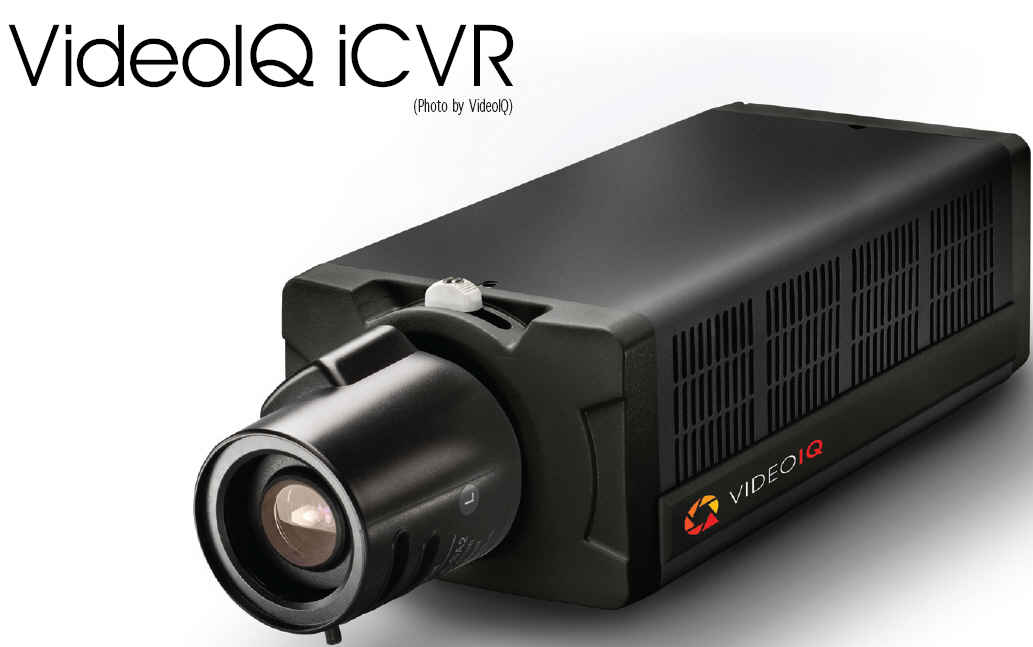
Photo by VideoIQ

Photo by VideoIQ
Direction of Travel
Walkways, parking lot entrance/exit driveways, and some waterways often have a defined direction of travel flow. People or vehicles are expected to move in a continuous single direction. The ability to dynamically detect objects moving against the expected traffic flow can indicate potential threats, or even just mischievous behavior. The VideoIQ iCVR allows you to set a direction of travel monitor with 360 degrees of rotation for any defined regions of interest.
Parking Lot Monitoring
Auto dealerships, long-term parking lots, mall parking lots and similar sites will often have periods of time where no activity is expected in the parking lot. Activities occurring at these times generally represent a significant threat, often of auto theft or related property damage. Because VideoIQ products rapidly adapt to and learn the background of a scene, a busy dealership lot can easily be monitored for after hours activities with no special recalibration steps required.
Outdoor Inventory Control
Retailers often store large or seasonal merchandise outdoors near the store entrance. This merchandise can be high value, and due to the rapid sales pace is often difficult for employees to monitor inventory manually. Merchandise theft after hours is a significant source of shrinkage. Sites may employ a roving security guard, either on foot or in a vehicle to attempt to deter theft. Adding the iCVR to these sites helps reduce after-hours theft of these items kept outside.
Crowd Formation Monitoring
Commercial and educational sites benefit from the ability to dynamically recognize when a crowd is forming in a given area. Generally speaking, sudden crowd formation is an indicator in either case of a situation that should be monitored by the appropriate on-site personnel. VideoIQ products can be configured to detect ¡°crowds¡±, either by density settings of low, medium and high, or by finite numbers.
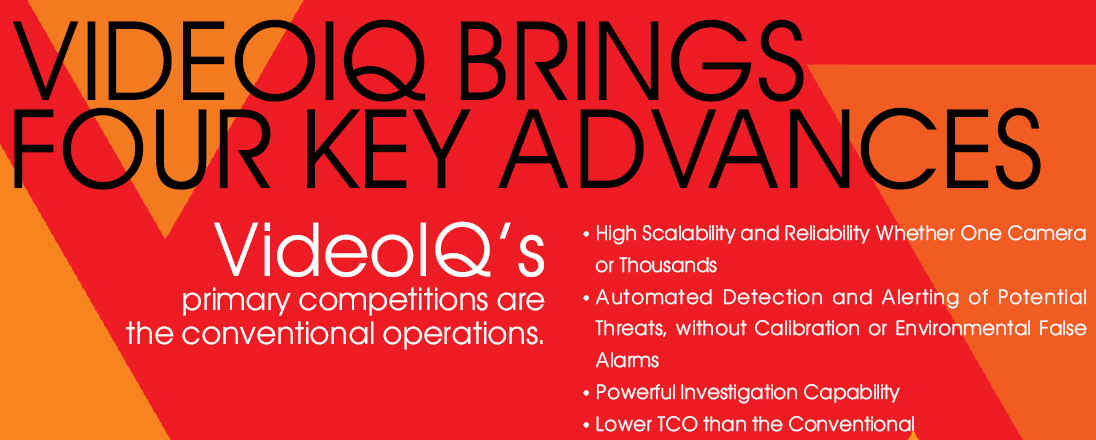
GO-TO-MARKET STRATEGY
VideoIQ employs a direct sales force as well as a channel sales team both in the U.S. and in Europe. In September 2008, VideoIQ launched the VideoIQ Inner Circle Partner Program, a program designed for resellers, system integrators, and consultants to help customers meet their security needs with VideoIQ¡¯s advanced intelligent video surveillance solutions. The program was launched with charter members including Navco, Wachter and GSI in the U.S., as well as Stratel, GDS, KSA, Wavelet in EMEA.
VISION FOR THE FUTURE
VideoIQ intends to further advance its line of intelligent video surveillance offerings by introducing new form factors, such as encoders, dome cameras and more. By continuing to innovate while building out its sales channels, VideoIQ intends to revolutionize the industry by enabling companies of all sizes to cost-effectively implement intelligent video surveillance, in which analytics is not just an ¡®add on¡¯ but rather the foundation that drives the benefits of the entire system. VideoIQ is well on its way to making intelligence part of every surveillance system out there.
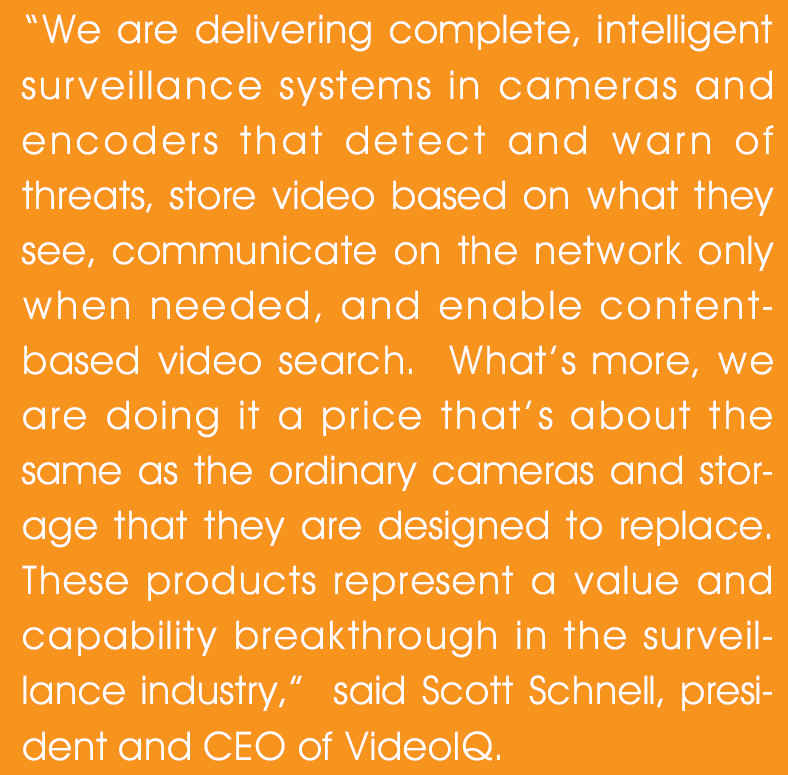
INTERVIEW

¡°Our goal is to enable one guard to do the job of 10 in detecting and addressing problems.¡±
Video surveillance is a powerful tool in preventing crime and loss, yet it can be very costly to implement and monitor. VideoIQ¡¯s inspiration is to solve the core problems of surveillance technology and bring new benefits to customers. In this interview with Amanda Kim, Editor of SecurityWorld INTL, Scott Schnell, CEO & President of VideoIQ, speaks about how the company has been improving the reliability and capability of surveillance systems by applying some of its innovations and discusses the current state of intelligent surveillance technology.
You must be very proud of being a leader of the world¡¯s first intelligent surveillance system inside a camera. How did you get involved with intelligent video security in the beginning?
I was introduced to the founders of VideoIQ by a mutual connection in the venture capital industry. I was captivated by the capabilities of the technology they had developed and was impressed by the capability and zeal of the team. It quickly became apparent to me that the technology had the potential to revolutionize surveillance systems and make them much more capable than in the past, and that there was ample opportunity to deliver surveillance benefits to entirely new types of organizations. The industry was and is in the middle of a technology renaissance. In many ways, it is the right technology at the right time.
You have achieved a great deal of industry breakthroughs in such a short period of time -- such as bandwidth-friendly IP cameras and encoders, the ¡°digital guard¡± etc. What has inspired you?
We saw a tremendous opportunity to improve the reliability and capability of surveillance, and to reduce costs, by applying some of the innovations from the IT industry to surveillance products. For example, our goal was to apply technology and automate the most time consuming and tedious part of video monitoring -- enabling one guard to do the job of 10 in detecting and addressing problems. And to make it widely applicable in the commercial market, we had to make it easy to install and use in real world conditions.
The other problem we sought to address is the cost of investigations where thousands of hours are spent tediously reviewing video to identify the movements of a suspect and his or her potential collaborators. Wouldn¡¯t it be great to provide investigators with a tool to find out which cameras had recorded video of a particular individual, and to be able to search for that video across all cameras with a simple click of the mouse? This is one of the revolutionary capabilities of applying video analytics to both live and stored video.
It¡¯s this kind of challenge and opportunity that keeps us inspired and moving forward.
What can you tell us about the current state of intelligent surveillance technology and how do you forecast its future?
Until now, intelligent surveillance technology was an expensive, complex add-on to surveillance systems that only provided one benefit -- automating the detection of types of objects like people and vehicles. Intelligence had not played a significant role in either investigation or in optimizing the performance and cost/benefit of the surveillance system overall.
Today, we are in entering a new era -- one where intelligence is becoming a fundamental foundation of the system -- benefitting storage, investigation, and networking, as well as providing threat detection benefits.
We have also reached a point where a new generation of analytics has both eliminated the need for manual field calibration and maintenance, and has addressed the high false alarm rates that have plagued systems in the past.
In the future, intelligent cameras will be able to learn in the field, based on interaction with operators. This means systems will get ¡°smarter¡± and more accurate the more they are used.
Please briefly update us on some of the recent industry activities that may affect your business.
We made a decision early on to embrace and invest in helping advance standards like Linux, several open-source projects, H.264 video compression, and the new standards being created within the SIA (Security Industry Association). H.264 is already being rapidly adopted by manufacturers and brings benefits in video quality, bandwidth and storage efficiency. We are actively contributing to the OSIPS DVI standard for data interoperability, so that all data for control and monitoring can be understood and exchanged between any vendors¡¯ systems. This will provide customers with greater choice, vendor independence, and form a foundation on which new innovations can be created at a more rapid pace.
For more information, please send your e-mails to swm@infothe.com.
¨Ï2007 www.SecurityWorldMag.com. All rights reserved.
|



